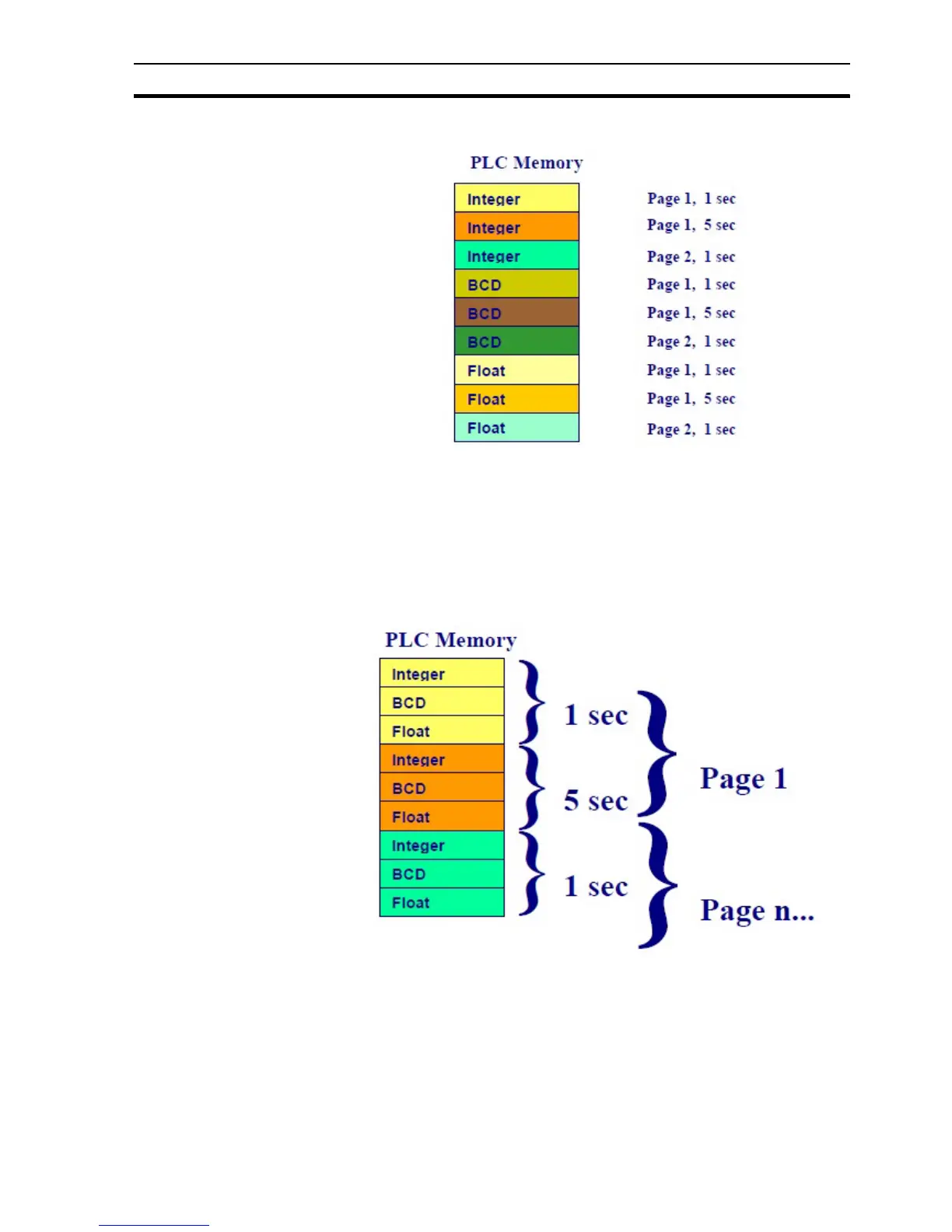Performance SECTION 20 Best Practices
265
Figure 2: Bad grouping example
In Figure 2 we see the PLC Programmer has arbitrarily chosen to group data
by its format: Integers, then BCD then Floats (or even worse not at all!). When
the SCADA is written, this data is used by different pages and different update
rates. The different colours are to indicate that each block must be read
individually, totalling 9 communication requests, which could be for as few as 9
memory addresses.
Figure 3: Good grouping example
However in Figure 3 we see the PLC Programmer and SCADA developer
have reorganised the memory now there are only 3 blocks, which would be the
same for up to 3000 memory addresses. This is clearly far better than just 9
memory addresses with 9 communication requests. To achieve this, design
your application using the following rules:
